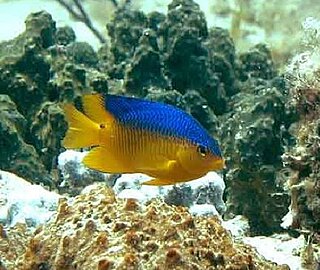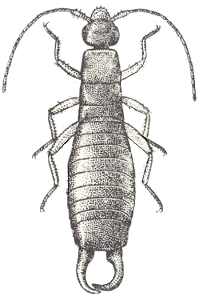Human cannibalism is the act or practice of humans eating the flesh or internal organs of other human beings. A person who practices cannibalism is called a cannibal. The meaning of "cannibalism" has been extended into zoology to describe an individual of a species consuming all or part of another individual of the same species as food, including sexual cannibalism.

The hammerhead sharks are a group of sharks that form the family Sphyrnidae, commonly referred to as ‘hammerheads’ for the unusual and distinctive form of their heads, which are flattened and laterally extended into a "hammer" shape called a cephalofoil. The shark’s eyes are placed one on either end of this T-shaped structure, with their small mouths directly centered and underneath. Most hammerhead species are placed in the genus Sphyrna, while the winghead shark is placed in its own genus, Eusphyra. Many different— but not necessarily mutually exclusive—functions have been postulated for the cephalofoil, including sensory reception, manoeuvering, and prey manipulation. The cephalofoil gives the shark superior binocular vision and depth perception.

Predation is a biological interaction where one organism, the predator, kills and eats another organism, its prey. It is one of a family of common feeding behaviours that includes parasitism and micropredation and parasitoidism. It is distinct from scavenging on dead prey, though many predators also scavenge; it overlaps with herbivory, as seed predators and destructive frugivores are predators.

The northern pike is a species of carnivorous fish of the genus Esox. They are typical of brackish and fresh waters of the Northern Hemisphere. They are known simply as a pike in Great Britain, Ireland, and most of Eastern Europe, Canada and the United States.

Centipedes are predatory arthropods belonging to the class Chilopoda of the subphylum Myriapoda, an arthropod group which includes millipedes and other multi-legged animals. Centipedes are elongated segmented (metameric) creatures with one pair of legs per body segment. All centipedes are venomous and can inflict painful bites, injecting their venom through pincer-like appendages known as forcipules. Despite the name, no centipede has exactly 100 pairs of legs; number of legs ranges from 15 pairs to 191 pairs, always an odd number. They are predominantly carnivorous.

Earwigs make up the insect order Dermaptera. With about 2,000 species in 12 families, they are one of the smaller insect orders. Earwigs have characteristic cerci, a pair of forcep-like pincers on their abdomen, and membranous wings folded underneath short, rarely used forewings, hence the scientific order name, "skin wings". Some groups are tiny parasites on mammals and lack the typical pincers. Earwigs are found on all continents except Antarctica.

Damselfish are those within the subfamilies Abudefdufinae, Chrominae, Lepidozyginae, Pomacentrinae, and Stegastenae within the family Pomacentridae. Most species within this group are relatively small, with the largest species being about 30cm in length. Most damselfish species exist only in marine environments, but a few inhabit brackish or fresh water. These fish are found globally in tropical, subtropical, and temperate waters.

Forficula auricularia, the common earwig or European earwig, is an omnivorous insect in the family Forficulidae. The European earwig survives in a variety of environments and is a common household insect in North America. The name earwig comes from the appearance of the hindwings, which are unique and distinctive among insects, and resemble a human ear when unfolded; the species name of the common earwig, auricularia, is a specific reference to this feature. They are considered a household pest because of their tendency to invade crevices in homes and consume pantry foods, and may act either as a pest or as a beneficial species depending on the circumstances.
Spider behavior refers to the range of behaviors and activities performed by spiders. Spiders are air-breathing arthropods that have eight legs and chelicerae with fangs that inject venom. They are the largest order of arachnids and rank seventh in total species diversity among all other groups of organisms which is reflected in their large diversity of behavior.

Cannibalism is the act of consuming another individual of the same species as food. Cannibalism is a common ecological interaction in the animal kingdom and has been recorded in more than 1,500 species. Human cannibalism is well documented, both in ancient and in recent times.

The scissortail sergeant or striptailed damselfish is a large damselfish. It earns its name from the black-striped tail and sides, which are reminiscent of the insignia of a military Sergeant, being similar to those of the sergeant major damselfish. It grows to a length of about 16 centimetres (6.3 in).

In animals, infanticide involves the intentional killing of young offspring by a mature animal of the same species. Animal infanticide is studied in zoology, specifically in the field of ethology. Ovicide is the analogous destruction of eggs. The practice has been observed in many species throughout the animal kingdom, especially primates but including microscopic rotifers, insects, fish, amphibians, birds and mammals. Infanticide can be practiced by both males and females.

Labidura riparia is a species of earwig in the family Labiduridae characterized by their modified cerci as forceps, and light tan color. They are commonly known as the shore earwig, tawny earwig, riparian earwig, or the striped earwig due to two dark longitudinal stripes down the length of the pronotum. They are sometimes wrongly referred to as Labidura japonica, although said species is actually a subspecies, Labidura riparia japonica, found only in Japan. L. riparia are a cosmopolitan species primarily in tropical to subtropical regions. Body size varies greatly, ranging from 16 mm to 30 mm, with 10 abdominal segments. Males and females differ in forcep size, with males having much larger and stronger curve, while females have smaller, straighter forceps with a slight curve at the end. Earwigs use these forceps to assist in predation, defense, sexual selection, courting and mating, and wing folding.

The seashore earwig is a species of earwig in the family Anisolabididae. The species was first described in 1846 by Adam White. This species has a blackish-brown body with brown-yellow legs. It has two light brown spots on its head, close to the inside of each eye. Its abdomen is widest at the seventh segment. It is flightless. It is native to eastern Australia and New Zealand. Similar both ecologically and taxonomically to the maritime earwig, this species is commonly found on beaches under stones and debris. It is a carnivore, feeding on millipedes, flies, and isopods such as woodlice. Like most other earwigs, the females care for their young during development, and the larva go through five instars before becoming adults. The species also has a negative phototaxis, meaning that it tends to move away from a light source.
Rhynocoris tristis is a species of assassin bug family (Reduviidae), in the subfamily Harpactorinae. R. tristis is a polyphagous predator found in sub-Saharan Africa.

Mantises are an order (Mantodea) of insects that contains over 2,400 species in about 460 genera in 33 families. The largest family is the Mantidae ("mantids"). Mantises are distributed worldwide in temperate and tropical habitats. They have triangular heads with bulging eyes supported on flexible necks. Their elongated bodies may or may not have wings, but all Mantodea have forelegs that are greatly enlarged and adapted for catching and gripping prey; their upright posture, while remaining stationary with forearms folded, has led to the common name praying mantis.

The fantail darter is a species of freshwater ray-finned fish, a darter from the subfamily Etheostomatinae, part of the family Percidae, which also contains the perches, ruffes and pikeperches. It is widely distributed across streams in North America.
Filial cannibalism occurs when an adult individual of a species consumes all or part of the young of its own species or immediate offspring. Filial cannibalism occurs in many animal species ranging from mammals to insects, and is especially prevalent in various species of fish. Exact evolutionary purpose of the practice in those species is unclear and there is no verifiable consensus among zoologists; it is agreed upon though that it may have, or may have had at some point in species' evolutionary history, certain evolutionary and ecological implications.

Matriphagy is the consumption of the mother by her offspring. The behavior generally takes place within the first few weeks of life and has been documented in some species of insects, nematode worms, pseudoscorpions, and other arachnids as well as in caecilian amphibians.















